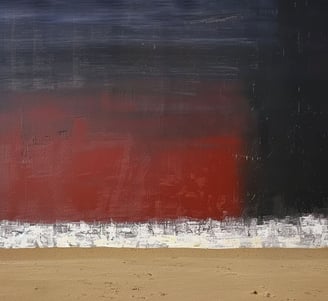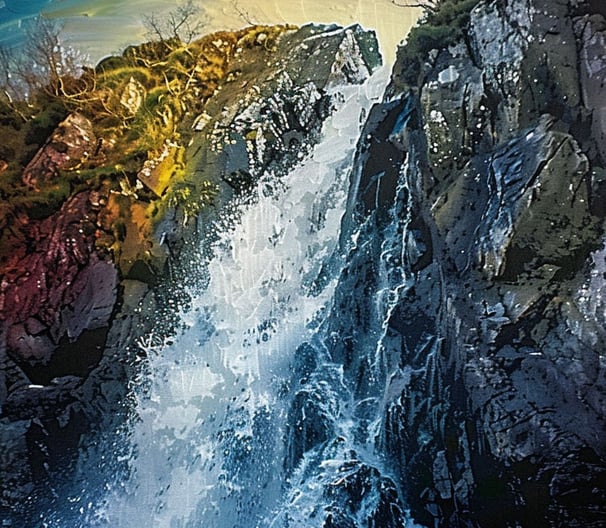I/We Art
I/We art was developed in part from the work of Sabina Spielrein’s, (1912) “Destruction as the Cause of Coming into Being”. It is a kind of metophoric use of Sabina's "I" which is our conscious self and the "We" a kind of nothingness, an undifferentiated space which lies deep within the "I". The "We" is in contradiction with the "I" and seeks to destroy the "I" but in doing so turns us into social beings. It does this by creating symbols or imagery that can be exchanged. The transformation is from something that only the individual can experience or express into a universal imagery which forms the basis of intersubjectivity and a kind of collective consciousness. ( To explore Spielrein’s work further please see Julie Reshe's extensive collection of works on this subject.)
Using this framework but metaphorically in relation to the natural versus social world the "I" is the natural world and is seen as representational, the actual object and the "We" the social world which is the abstract, the symbolised object. The "I" and the "We" are in opposition or contradiction reflecting, (even with the substantial effort at sustainability) the ever-growing clash between the needs of the social and natural world. The work also anticipates the future as the “We” has been generated by artificial intelligence (Ai). The "I" is based on images I created. This process of creating images is consistent with the overall aim of the work which is to highlight layers of contradiction in our life-world.


I/We Art and Joy


Todd McGowan (2022) "Enjoyment Right & Left" in many ways follows Spielrein’s framework of contradictions at the level of the individual but connects this to the social and political world. McGowan does this through a reaction of joyfulness in occupying a position at the centre of a contradiction. This position is one of having resolved the contradiction and with it the joy of this resolution. However, this process is continuous with eventual failure of the resolution and the emergence of new contradictions.


I/We Art images
The work draws upon a wide range of art from the Caspar David Friedrich’s rear-facing figure (Rückenfigur) to the work of Rothko. The use of these styles aims to give both a reflective and a contemplative sense where reflection concerns the past and contemplation the future. Rothko’s work also suggests a calming sense which is in opposition to a felt sense of tension also present in the imagery. Another key work that has similar qualities is Andreas Gursky, “Rhine II”, 1999. This work, like Rothko’s, has both calming elements and also a sense of tension in how the differing elements are organised. The aim of using these styles is to try and engage the viewer in a subtle sense of reflection and contemplation over contradictions at all levels but especially our relationship with the natural world. In essence to invite the viewer to stand back and examine contradictions and in doing so seek to find joy in their resolution.
I/We Art
Exploring possibilities for change through joy
Creativity
Finding ways of bringing together opposing forces
© 2024. All rights reserved.
